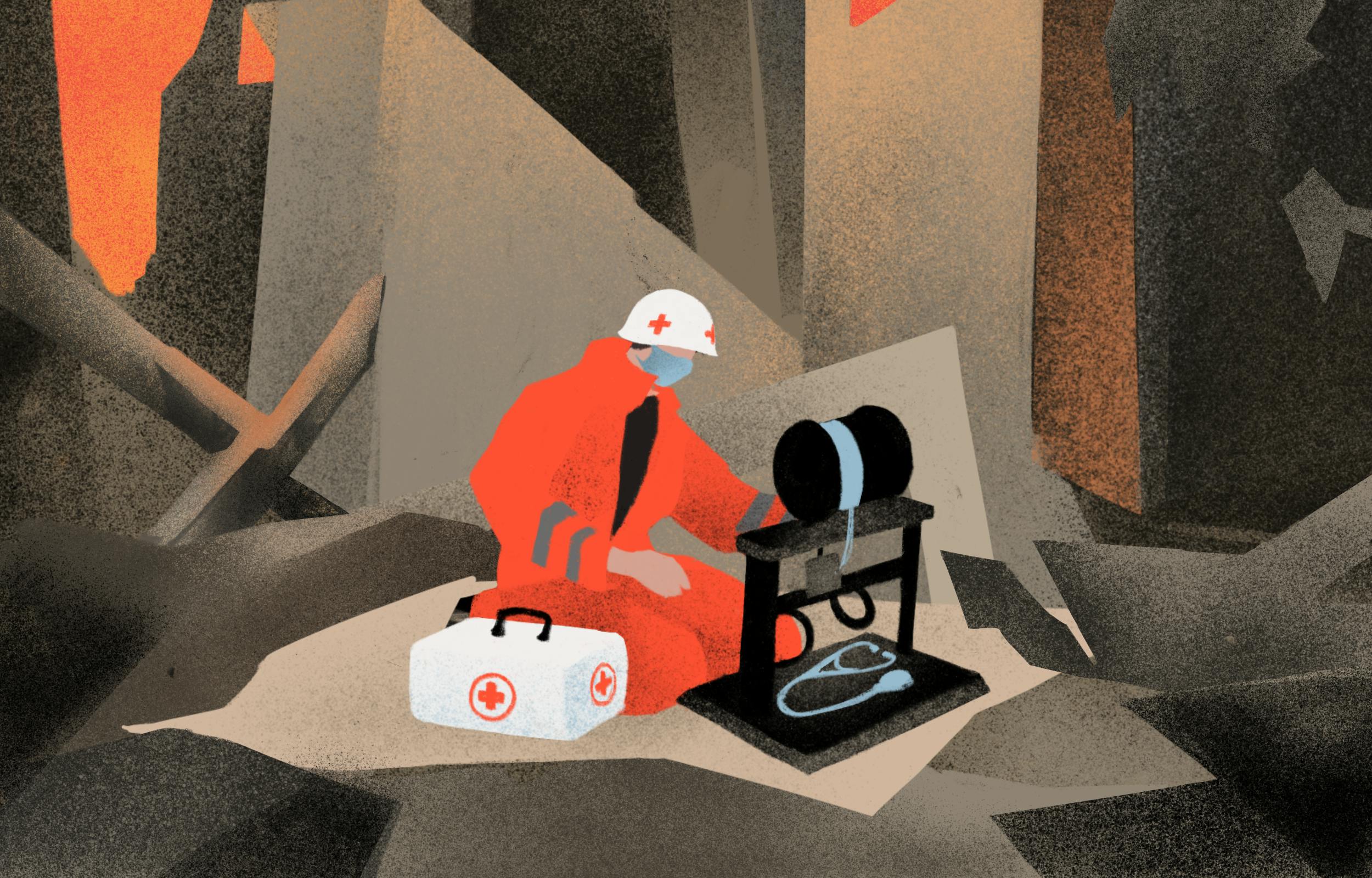On the front lines of war, innovators print tourniquets and stethoscopes
The Glia Project is not your typical medtech company.
They do their R&D with major universities and all of their own manufacturing. But they also sell the devices they produce at cost—and run primarily on grants and donations.
Why this precarity?
The organization began—and continues to operate at—the front lines of humanitarian disasters. In 2012, Glia founder Tarek Loubani was treating injured patients at Al Shifa Hospital in Gaza City during a previous conflict between Israel and Gaza. He and his fellow providers didn’t have stethoscopes.
Stethoscopes soon became the first device the Glia Project began 3D printing.
Now, Glia continues to provide critical supplies to medical providers in war-torn Gaza and Ukraine.
As they undertake this challenging work, we want to highlight what our industry can learn from their unique model.

The mission: Democratizing medical devices
Glia now 3D prints devices including stethoscopes, tourniquets, ear otoscopes, and dialysis caps specifically for providers and areas that urgently need them the most. Most recently, their efforts have focused on frontline providers in Ukraine and now in Gaza.
It seems Glia’s efforts have never been more challenging or urgent. Amid the current catastrophic war between Israel and Hamas, medical providers in Gaza are working to treat civilians without the most basic medicines and devices. Glia’s Gaza offices have been damaged, and they’re currently unable to print more devices on the ground.
However, production teams in satellite offices in Poland, the U.S., and Canada are preparing to transport tourniquets when more aid is allowed through from Egypt.
With whom Glia is serving, it’s clear profit is not a top priority.
“Glia isn’t interested in mass production,” executive director Carrie Wakem said. “That’s not our model. Our model is to help other people figure out how to get exactly what they need, and exactly how they need it.”
Glia also shares the device design and code, so other organizations can replicate and amplify their efforts—even if their operation ceases to exist.
Wakem told STAT that, while a partnership with a large manufacturer could scale up their operation, they’re not interested. They’re also not interested in producing supplies simply for donation.
The goal is to partner with communities on the ground to get 3D printing operations in place and respond directly to acute needs. And educate interested printers with their own 3D Printing Educational Workshop.
“If we genuinely want to help them, we don’t want to impose what we think that they need,” University of Central Florida global health professor Yara Asi said. “Initiatives like the Glia Project differentiate themselves because they saw a need that was already there and they tried to find a way to fix it by working with local communities.”
Our takeaway: A global approach, with a focus on hyperlocal needs
While Glia’s hub—and current focus—is Gaza, their small operation is impressively global.
Not only have they mobilized in Ukraine, but they’re also planning to bring their tourniquets to public centers in the U.S. to help respond to mass shootings.
At the same time, their nimble approach is responsive to exactly what the communities they’re working with need.
For example, in Gaza, many medical devices are severely restricted due to an Israeli government policy that labels a variety of machines as “dual use”—meaning they could possibly be used to develop weapons. Donors may send many of these devices to Gaza, Wakem said, but without access to replacement parts, defunct devices just accumulate. That’s why one of Glia’s future goals is to tackle inventorying and fixing these devices.
Without traditional medtech stakeholders (i.e., VC investors) influencing their projects, the Glia team answers primarily to the communities they’re embedded in. This allows them to always prioritize their goal: promoting self-sufficient health systems wherever they go.
Of course, we don’t think it’s necessary to work under the extreme conditions the Glia Project does to be similarly responsive to local needs. Yet, Glia’s work does underscore just how much community interaction is necessary to truly see the best way to make a difference.
For the rest of us working in our corners of medical technology, Glia’s example can serve as a reminder of how we must strive to include patients, clinicians, students, and even curious community members in our work. It’s how we achieve investment, yes, but it’s also how we identify where our expertise—our innovation—is most needed. It’s how we harmoniously work together toward that long-lasting, healthier world we all deserve.